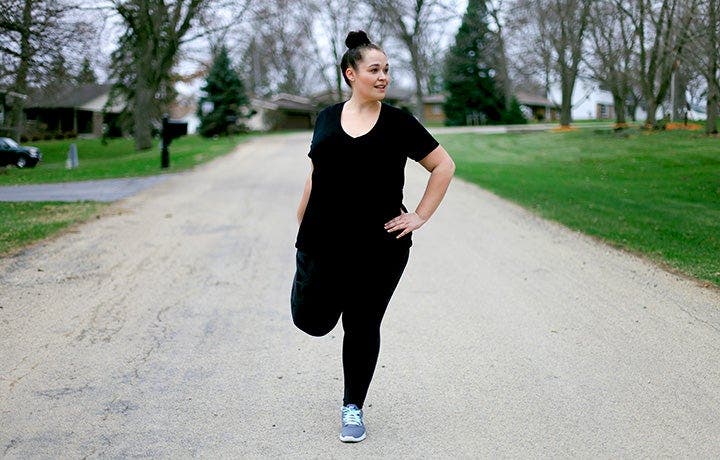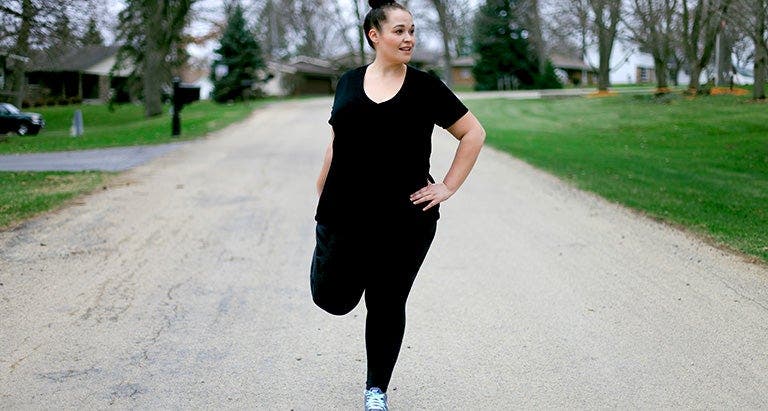7 Steps for Starting a Fitness Plan


If you’ve taken some time off from the gym, or working out just wasn’t ever really your thing, it’s not too late to live a more active lifestyle—even if it isn’t always easy to jump right in.
It’s hard to know how and where to start—especially if you’ve never worked out before—and you may not know exactly what exercises you should be doing (and for how long, and how frequently). But these concerns shouldn’t keep you from trying to make physical activity a habit.
Use this expert advice on how to ease into an activity plan. Stick to their tips below, and you’ll have a consistent regimen in no time.
Starting Your Fitness Plan
Step 1: Ease into it
This may seem like an obvious statement, but it’s more important than you might think—especially if you’re coming back to working out after some time off.
“It’s necessary to be aware of your current level of fitness so you can appropriately choose the first steps on your way back into a fitness routine,” says Luke Lombardo, fitness consultant, and a master trainer at Lagree Fitness in Los Angeles. “Getting overzealous, finding the most difficult workout routine, and doing that seven times a week, is a recipe for injury.” He suggests starting slow: Work out or be physically active two to three times a week, between 15 and 45 minutes each time.
Step 2: You don’t have to do it all at once
When you are first getting back into exercising, keep in mind that any amount of movement is good. You don’t need to go for 45 minutes straight at the beginning.
Try splitting up your total workout time into smaller increments, suggests Michele Olson, PhD, an adjunct professor of sport science at Huntingdon College in Montgomery, AL. “Start with one to two 10-minute segments of walking or simple body-weight exercise,” she says. “You’ll end up accumulating 30 to 45 minutes total.” Doing too much right away can leave you sore, tired, and not wanting to continue.
Step 3: Start with something low impact
If you’re coming back from any type of injury, start with low-impact exercise to help build up your strength (and to avoid re-injuring yourself). What does “low impact” mean? “For cardio, think of starting out on an elliptical or spin bike, which puts less stress on the body and joints,” suggests Lombardo. “In regards to strength training, stick to body weight or machines at the gym at first—avoid free weights and barbells at first until you have a basic understanding of weight training—or try taking a group class.” Resistance bands are a good low-impact tool, as well.
RELATED: 3 Ways to Walk
Step 4: Manage your expectations
Remember, this whole activity thing is either entirely new to you, or it’s been quite a while since you were running miles or lifting some weight—try not to get down on yourself if progress seems slow. “Expect to feel tired or winded fairly quickly,” says Olson. “But also know that your stamina will increase quickly—namely when it comes to cardio. Cardio increases fairly quickly after the first two weeks.” Strength-training gains may take more time, but you can get back to the numbers you used to hit as long as you take it slow and don’t get discouraged along the way. “You should feel great about being smart, and about getting yourself going on exercise,” says Olson.
Step 5: Schedule physical activity into your daily plan
If you want to make exercise a habit, especially at the beginning, treat it the same way you would an important work meeting by blocking off the time you need. “Creating a schedule helps us commit until something is truly a habit,” says Lombardo. “When first starting to get back into a workout routine, you are essentially trying to create a new habit. The more scheduling and planning that goes around this, the more likely you will commit and form a habit of it over time.”
Step 6: Track your progress
In today’s world, there’s an app for everything. But even a plain old notebook can help you turn exercise into a habit as you write down your progress day after day, week after week. “Journaling helps people to reflect, be accountable, and progress,” explains Olson. “Plus, seeing on paper that you’re able to do more this week than last week mentally helps keep you motivated to continue working towards your goals.”
Step 7: Set a reasonable goal
Motivate yourself to continue with your exercise regimen by always working towards an achievable outcome. “Have a reasonable goal and write it down,” says Lombardo. “Writing it down will help you commit to it. Tell your friends and family about your goal and ask them to help keep you accountable. The more support you have the better.”
RELATED: 6 Ways to Feel Comfortable When Exercise Feels Hard
